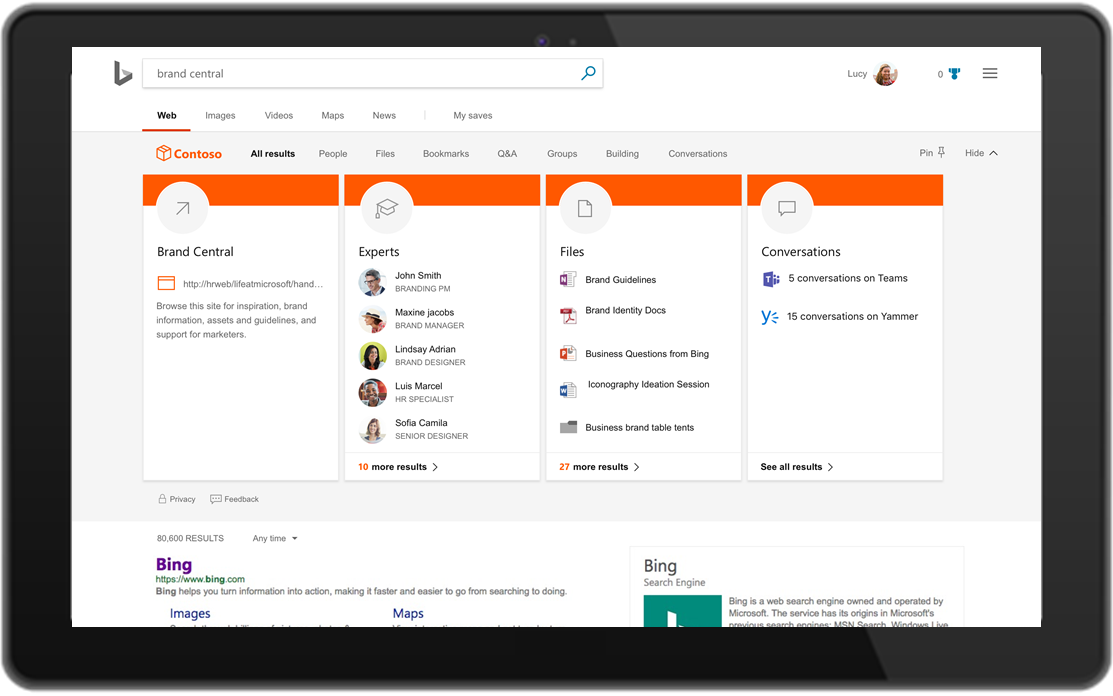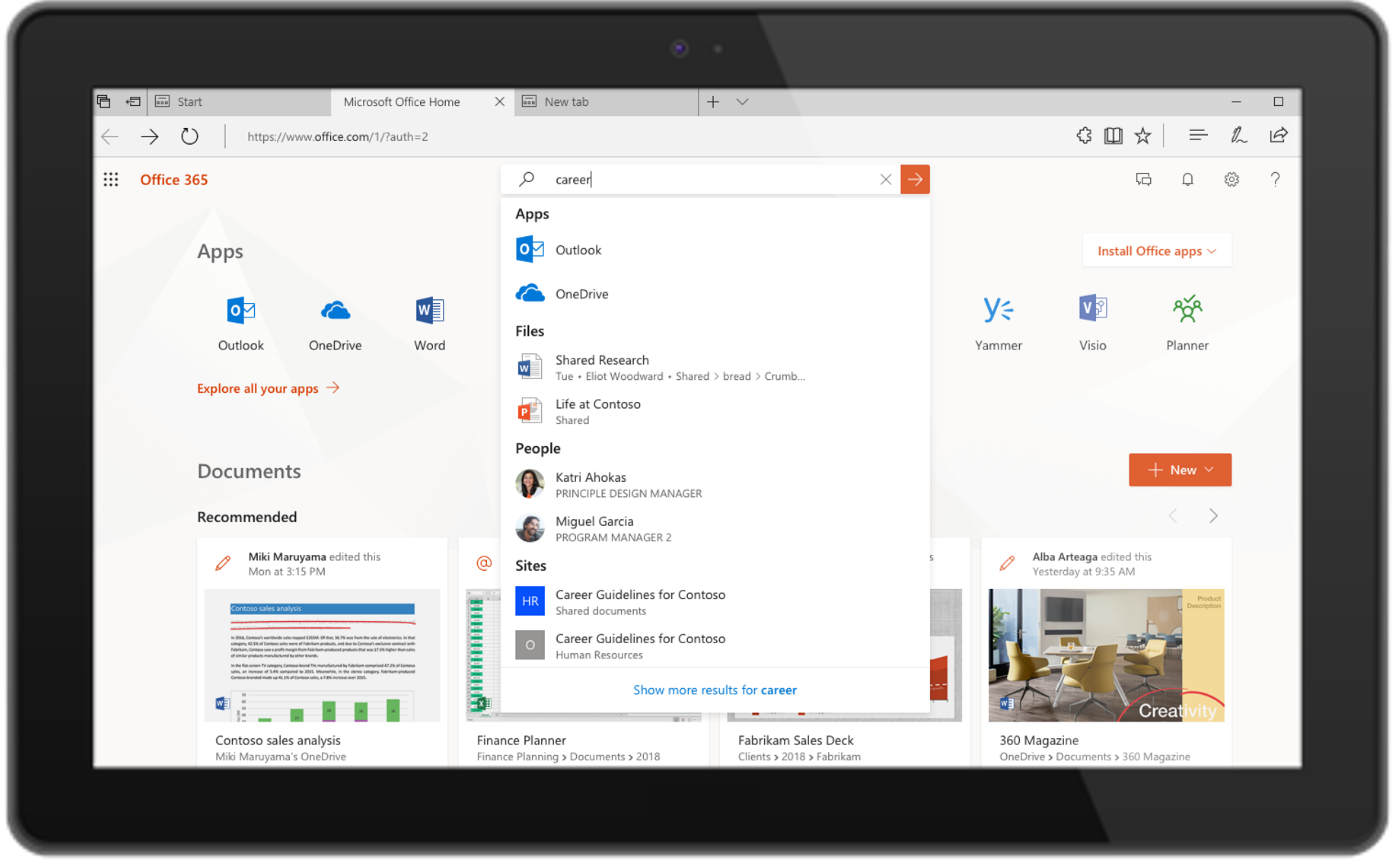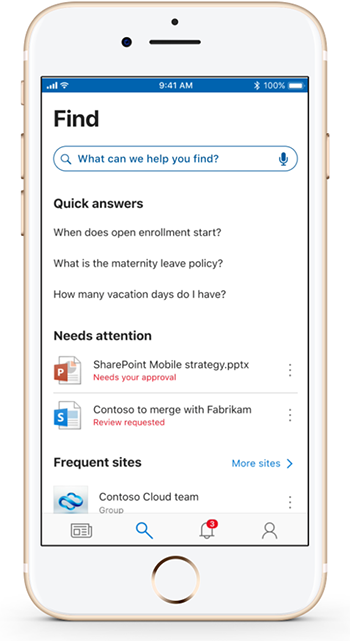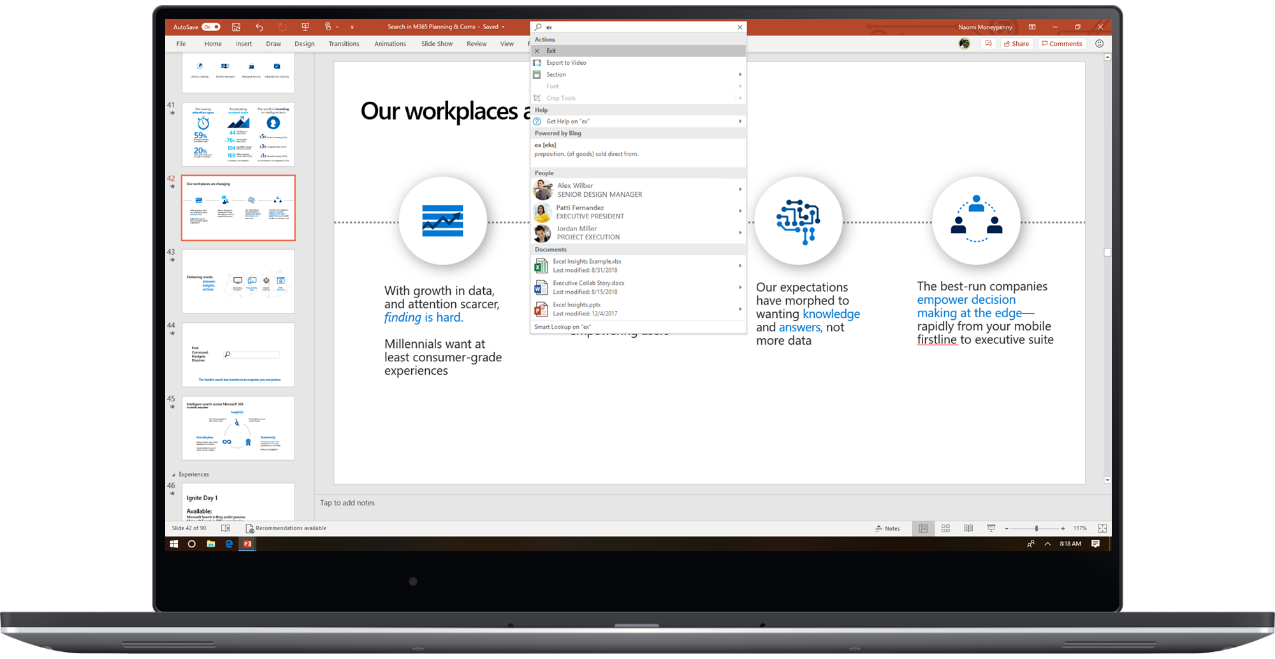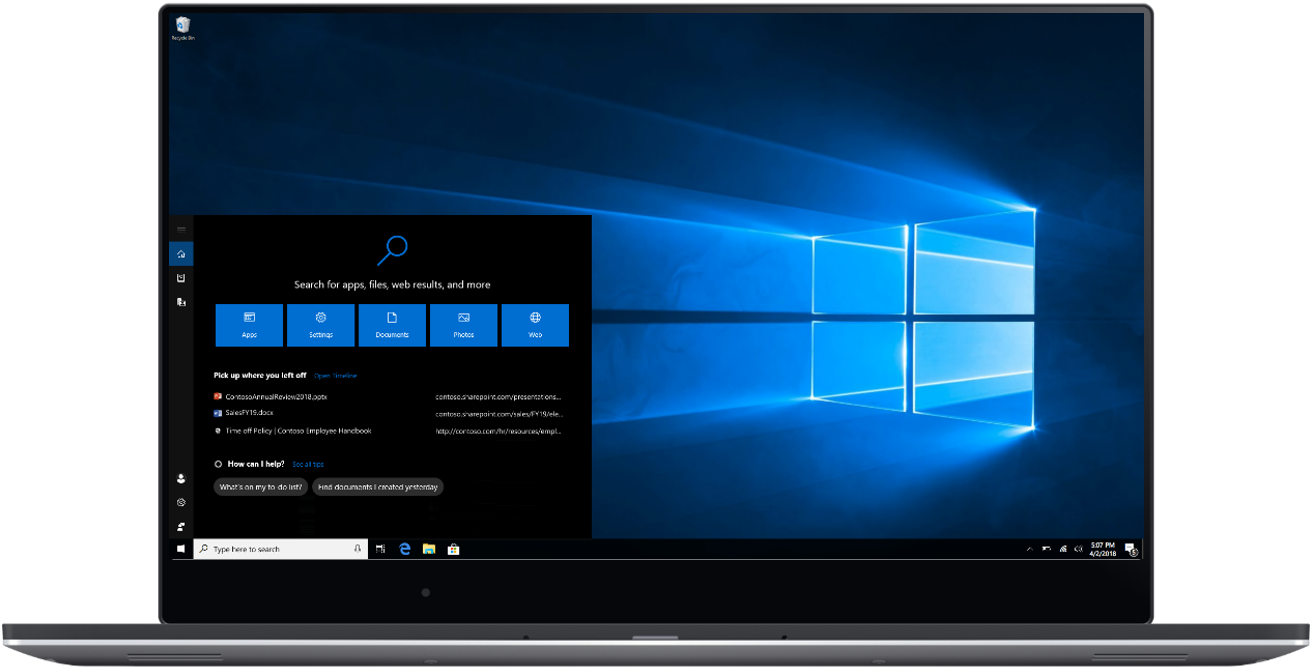
Microsoft Search—cohesive search that intelligently helps you find, discover, command, and navigate
At Ignite last year, we introduced personalized search across Office 365, a way to bring intelligent search and discovery experiences directly to you. Today, we’re delighted to announce that we are expanding that vision to encompass search both inside and outside of Microsoft 365. By applying artificial intelligence (AI) technology from Bing to the deep personalized insights surfaced by the Microsoft Graph, we are able to make search in your organization even more effective.
With Microsoft Search, we’re introducing new organizational search experiences into the apps you use every day, including Bing.com and Windows, and our vision to connect across your organization’s network of data.
We’re also evolving the notion of what search means. Getting pages of results with hyperlinks to other information is simply not enough. Faced with ever decreasing attention spans, and an explosion of data, we recognize that the challenge is to find and deliver answers to your questions, suggest insights, and enable you to take action on your tasks. This makes search a powerful capability that stretches across your work to make you more productive and take advantage of the collective knowledge from your organization.
Our vision is a cohesive and coherent search capability, prominent in every experience, providing the way to search across all your organization’s data—both inside and outside of Microsoft 365.
Over the next few months, you’ll experience these first steps:
- Search will move to a prominent, consistent place across the apps you work with every day. From Outlook to PowerPoint, Excel to Sway, OneNote to Microsoft Teams, Office.com to SharePoint, the search bar will be in the same place—across desktop, mobile, and web.
- Personalized results as soon as you click in the search box, such as people you share with the most and documents you were working on recently. No query is required to get suggestions.
- The search box itself will also command the application where you are working. For example, begin typing “acc” in Word to get list of suggested actions such as Accept Revision or Accessibility Checker. You no longer need to hunt through toolbars to look for a command.
- Search results will include results from across your organization. For example, within Word, you can find not only other Word documents, but also a presentation you were working on. You can navigate straight to that presentation or you can choose to incorporate slides from that file directly into your document.
- Extending that same organizational search experience wherever you are working—in Bing.com (when signed in with your Office 365 account), Edge or Windows. Search wherever you want to and get the same experience.
- Unified administration of your organizational search results, including admin-curated results such as bookmarks.
Experience Microsoft Search today
Key to delivering the Microsoft Search capability is the ability to have consistent scope of results anywhere you are searching. Even if the interface looks different, the goal is to have the same experience, personalized and contextualized for that specific interaction point.
Microsoft Search in Bing.com
Over the last year, 180 companies participated in our private preview, with files, sites, people, locations, and groups based on Microsoft Graph data. Based on the private preview feedback, we’re announcing the ability to search across conversations in both Teams and Yammer simultaneously.
Searching in Bing returns both your organizational results and web results, making it an easy destination for broad searches to get the best of your work world and secure your web searches. Public preview begins rolling out today. Tenant admins must opt in to the experience for their organization. Visit bing.com/business/explore for details.
Microsoft Search in Office.com
Get back to your work faster with Office.com, surfacing the same search scope across Microsoft 365. Find documents you were recently working on, as well as recommended documents that your colleagues have mentioned you in, and keep up to date with what has been worked on since you last looked at it. Microsoft Search in Office.com goes into targeted release today.
Microsoft Search in SharePoint mobile app
The new version of the SharePoint mobile app includes search as the default experience when you enter the app. It lists common questions, personalized results, and frequent searches that organizations can curate. The new SharePoint mobile app is available for download today.
Microsoft Search in the Outlook mobile app
The Outlook mobile app also highlights search as an important element of the user experience, providing access to commands, content, and people. With “zero query search,” simply placing your cursor in the search box will bring up recommendations powered by AI and the Microsoft Graph. The Outlook mobile app for iOS and Android are available for download today.
Outlook will also bring zero query, fuzzy search, and top results based on intelligent technology to other endpoints as we drive towards coherence. Enhancements to search in Outlook for Windows, Mac, and on the web started to roll out to targeted release mid-September.
Connect and curate data across your organization’s systems
Boundary-less search is only as good as the sources it has access to. We recognize that organizations have a wealth of data in other third-party services and applications. In 2019, we will build native connectors for popular third-party applications that will surface search results inline with Microsoft data into all the search experiences you have, including Office, Windows, Edge, and Bing.com. Administrators will be able to select which connectors they wish to use for their organizations based on which investments they’ve already made in third-party applications. Further extensibility with APIs will also be possible. Organizations will be able customize the search sources and the display of search results with custom refiners and verticals, and control the display of how sources of information look in result pages.
Coming in the first half of 2019
Microsoft Search in Office
Our new suite-wide search in the ribbon offers the same consistent experience and results across your favorite Office apps—across desktop, mobile, and web. Find, command, navigate, and discover directly from the same search box.
Microsoft Search in Windows
Right from your taskbar, perform searches that include local and organizational search results; whether that is people, the location of an office, or your files, you can find it all in Windows.
What’s coming next?
The Microsoft Graph gleans insight from the people, sites, devices, and documents you work with and is the basis for consistent learning across your organization, wherever you and your colleagues work. Microsoft Graph ranks search results relevant to your needs. You can see all the results that satisfy your query, but personalized search prioritizes the results that are most likely to achieve your objective.
Supercharging the Microsoft Graph with advanced AI technology from Bing and its knowledge of the world, we can extend our vision for insightful technology to make it simple to ask natural language questions and get real answers, without manual intervention. For example, a question such as “Can my brother work for me at my company?” means that not only syntactic parsing of the question is necessary but semantic understanding. Your organization’s HR policy probably specifies “close family relationships,” so we use Bing’s knowledge of the world to expand and match “brother” and couple that with searching your organization’s intranet to derive the answer.
Using this machine reading comprehension technology is just one of the many ways we’ll be continuously improving Microsoft Search in the future.

